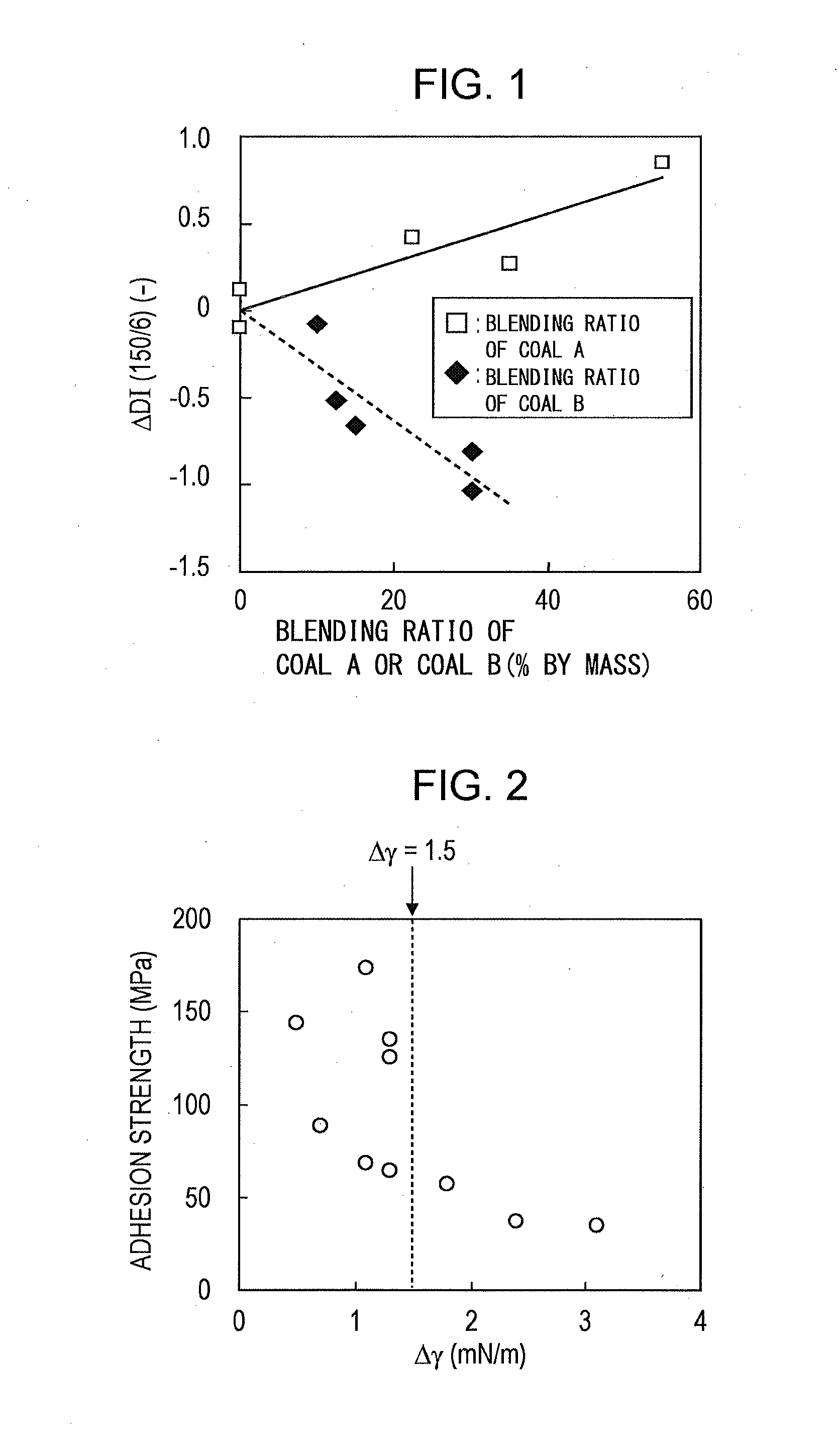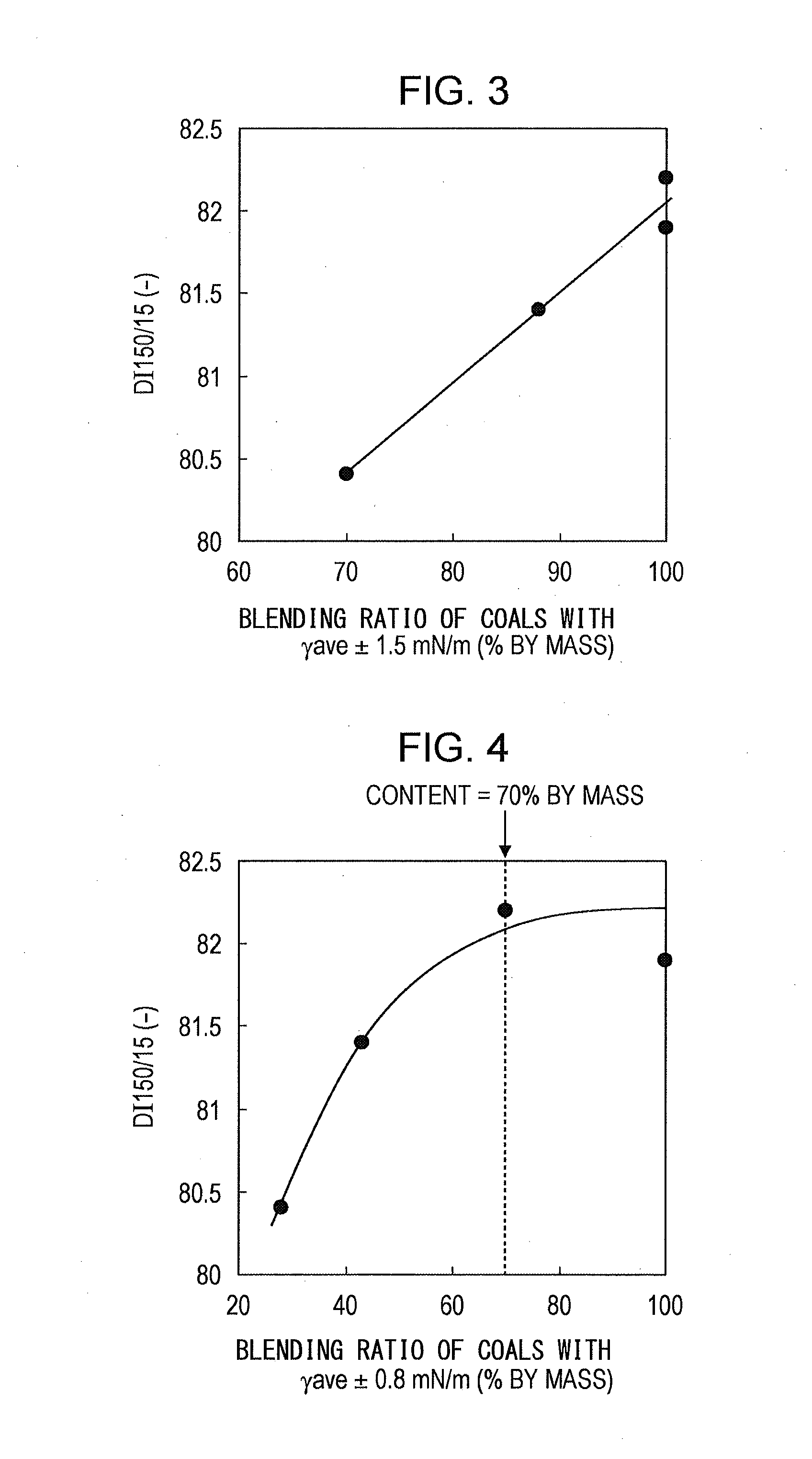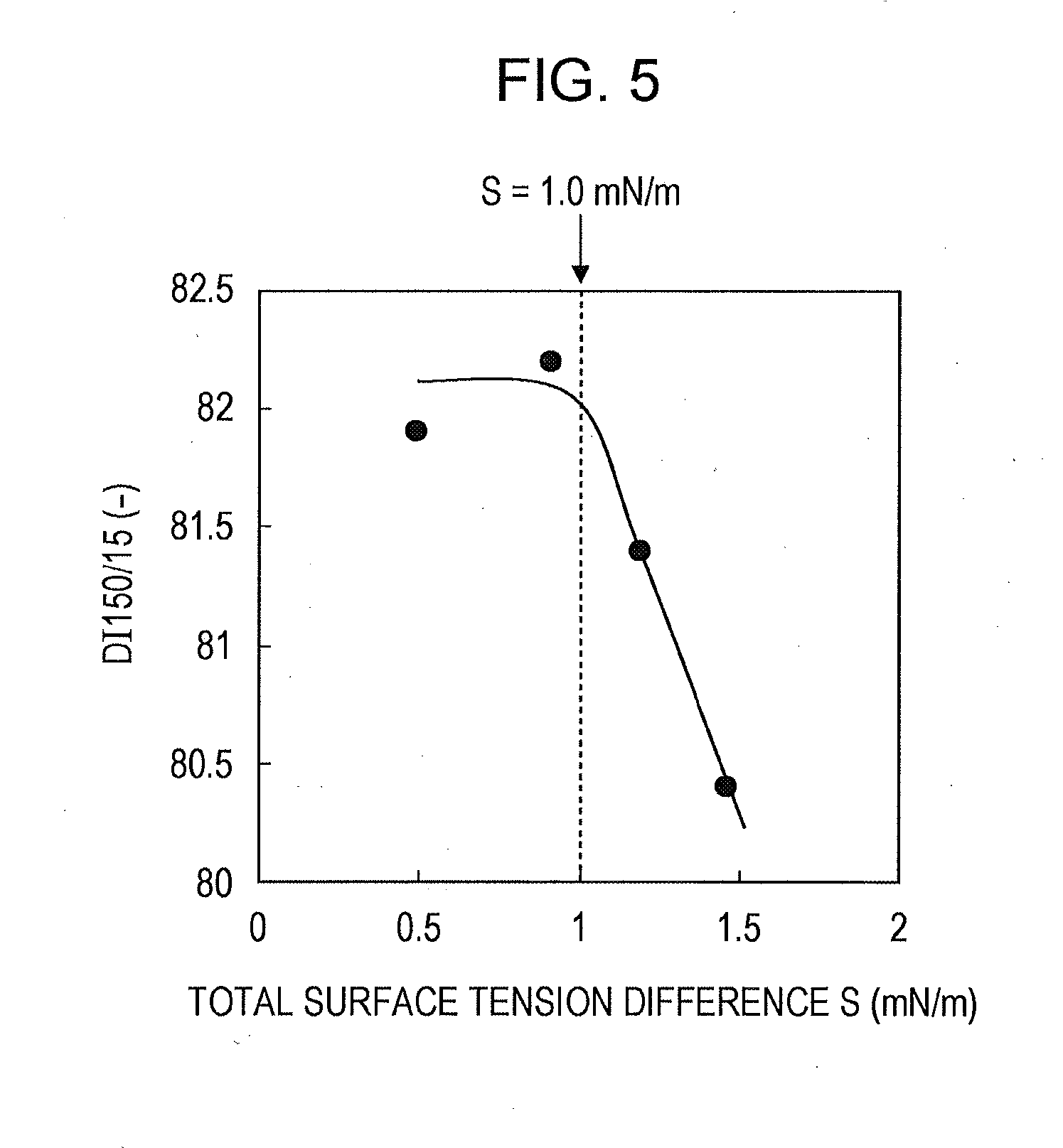Method for blending coals for cokemaking and method for producing coke
- Summary
- Abstract
- Description
- Claims
- Application Information
AI Technical Summary
Benefits of technology
Problems solved by technology
Method used
Image
Examples
example 1
[0056]Coals for use in cokemaking were used as samples. Each of the coals was crushed to a particle size of 200 μm or less and was charged into a graphite vessel. The vessel was heated to 500° C. at 3° C. / rain in an electric furnace in an inert gas atmosphere (nitrogen) and was quenched by dipping in liquid nitrogen. The resulting semicoke was crushed to a particle size of 150 μm or less and was dried at 120° C. in a dry inert gas stream for 2 hours to prepare a semicoke sample for surface tension measurement. The surface tension distribution of each sample was measured by film flotation. The heating rate was set to 3° C. / min because the heating rate for the production of coke in a coke oven is about 3° C. / min. The liquid used in the surface tension measurement by film flotation was an aqueous ethanol solution, which is inexpensive and is easy to handle. The representative surface tension of the sample was determined as the average of the surface tension distribution measured by fil...
example 2
[0062]Under the conditions where 30% by mass of coal B was blended in Example 1 (referred to as “blend b”), the coal (coal C) having a surface tension of 40.9 mN / m in the base coal blend was replaced with coal D, which had a surface tension of 39.1 mN / m (referred to as “blend b′”). Coal C and Coal D had substantially the same mean maximum vitrinite reflectance (mean Ro) and common logarithm of Gieseler plastometer maximum fluidity (log MF). Coal D was not contained in the original base coal blend.
[0063]After this replacement, the surface tension of the base coal blend was measured to be 39.4 mN / m, which was 0.7 mN / m lower than in Example 1. The surface tension difference between the base coal blend and coal B in blend b′ was smaller than the surface tension difference between the base coal blend and coal B in blend b. Examination of the strength of a coke produced from blend b′ showed that the strength was 0.5 point higher than that of a coke produced from blend b.
[0064]These result...
example 3
[0065]Examples 1 and 2 demonstrated that a larger surface tension difference between semicokes prepared from a plurality of coals by heat treatment results in a larger decrease in the strength of a coke produced by carbonizing a blend of these coals and that a larger proportion of a coal that produces a semicoke having a large surface tension difference results in a larger decrease in the strength of a coke produced from the coal blend. From these examples alone, however, it is unclear how much surface tension difference results in a significant decrease in strength.
[0066]Accordingly, the inventors researched the relationship between the surface tension difference between semicokes and the adhesion strength between coals. The coals shown in Table 1 (E to M) were selected, and the adhesion strength between two types of coals in each combination shown in Table 2 was measured by the following method:
[0067]1. Two types of coals shown in Table 2 were thoroughly blended in a mass ratio of...
PUM
 Login to View More
Login to View More Abstract
Description
Claims
Application Information
 Login to View More
Login to View More - R&D
- Intellectual Property
- Life Sciences
- Materials
- Tech Scout
- Unparalleled Data Quality
- Higher Quality Content
- 60% Fewer Hallucinations
Browse by: Latest US Patents, China's latest patents, Technical Efficacy Thesaurus, Application Domain, Technology Topic, Popular Technical Reports.
© 2025 PatSnap. All rights reserved.Legal|Privacy policy|Modern Slavery Act Transparency Statement|Sitemap|About US| Contact US: help@patsnap.com



